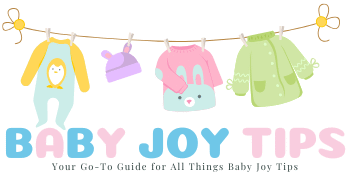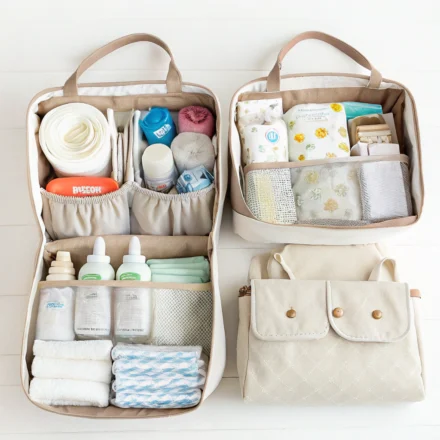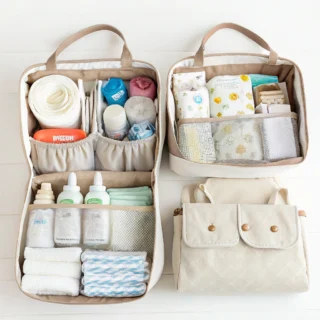Sleep deprivation can hit like a freight train in the early weeks of parenthood. You’re exhausted, your newborn wakes every 1–2 hours, and you’re desperate for a longer stretch of sleep—but you’re not willing to try “cry-it-out.” Good news: you don’t have to.
In this post, we’ll walk through how to get a newborn to sleep longer stretches using gentle, no-cry techniques backed by science, real-life experience, and proven parenting strategies. These baby joy tips will help you create a soothing sleep environment, establish sustainable habits, and extend your baby’s rest—without compromising connection or comfort.
Understand Why Newborns Wake Often
Before we look at how to extend newborn sleep stretches, it’s essential to understand what’s biologically normal in the early weeks.
The Reality of Newborn Sleep
- Newborns have immature sleep cycles, typically lasting 50–60 minutes.
- REM sleep dominates, making it easy for them to wake.
- Tiny stomachs mean frequent feedings, especially in the first 8–12 weeks.
Knowing this helps you set realistic expectations and avoid frustration. You’re not failing—your baby is just doing what they’re wired to do.
Set the Foundation: Gentle Newborn Sleep Tips That Actually Work
Longer sleep starts with healthy, predictable routines. The earlier you start laying groundwork, the better the results.
Create a Soothing Pre-Sleep Routine
Newborns are sensory creatures. A calming routine can signal it’s time to transition from stimulation to sleep.
Try this 15–20-minute wind-down:
- Dim the lights
- Use white noise or womb sounds
- Gentle massage or skin-to-skin cuddle
- Feed in a quiet, dark room
- Swaddle (if baby is under 8 weeks and not rolling)
This simple ritual builds predictability and security, both of which are critical for newborn sleep without crying it out.
Day-Night Confusion? Reset Their Internal Clock
Many babies mix up days and nights. Use these strategies to fix it naturally:
- Expose them to sunlight during the day
- Keep nighttime calm and low-stimulation
- Avoid overnapping during daylight hours
These tactics support how to establish a newborn sleep routine in a way that syncs with their circadian biology.
Feeding Tweaks That Promote Longer Sleep
Believe it or not, how and when you feed your baby can influence sleep duration at night.
Cluster Feed in the Evening
From 4 PM to bedtime, offer more frequent feeds (every 60–90 minutes). This naturally “tanks up” your baby before the long stretch of night.
Try a Dream Feed
A dream feed is a quiet, sleepy nursing or bottle session around 10–11 PM. Many babies will sleep longer after it—some even until 3–4 AM.
This no-cry strategy is one of the most effective ways to help newborns sleep better at night, especially between weeks 6–12.

Optimize the Sleep Environment
Let’s talk about best sleep practices for newborns that support comfort and safety—without any tears.
Swaddle Smartly (Then Transition)
Swaddling mimics the womb and prevents startle reflex wake-ups. Stop swaddling when your baby starts showing signs of rolling.
Pro tip: Use a transitional swaddle or sleep sack to extend that cozy, secure feeling.
Use Consistent White Noise
Steady, low-frequency sound can:
- Block household noise
- Soothe baby with familiar rhythms
- Help babies stay in deeper sleep stages
This is one of the most soothing techniques for newborn sleep and works almost universally.
The “Drowsy but Awake” Myth—And What to Do Instead
Many books preach “put baby down drowsy but awake” from day one. Here’s the truth: that doesn’t work for most newborns.
Focus on Sleep Associations, Not Sleep Independence (Yet)
In the first 12 weeks, it’s OK—and beneficial—for babies to fall asleep while being held or fed. Sleep independence comes later.
You can gently introduce awareness by:
- Pausing before picking baby up (watch for signs they might settle)
- Using a pacifier or shushing when they stir
- Patting in the bassinet for light fusses instead of immediate rocking
These are real, supportive no-cry newborn sleep solutions that avoid abrupt transitions and build trust.
Sample Newborn Sleep Schedule for Longer Naps and Nights
Every baby is different, but here’s a sample schedule around 6–10 weeks:
Morning Wake Window: 60–75 mins
Nap #1: 45–90 mins
Midday Wake Windows: 75–90 mins
Nap #2 & #3: 1–2 hours each
Late Afternoon: Short Nap (catnap)
Bedtime Routine: 6:30–7:30 PM
Dream Feed: 10–11 PM
Night Feeds: 1–2 feeds depending on weight and age
This structure shows how to extend newborn sleep stretches without forcing the issue. It’s responsive and flexible—just like parenting should be.
When Regression Hits: Stay Gentle, Stay Consistent
There will be setbacks: growth spurts, developmental leaps, illness. Don’t panic.
Revert to what’s worked: your calming routine, cozy sleep setup, and responsive feeding.
Gentle, consistent action is the most effective form of baby sleep training without CIO. Progress isn’t linear, but it’s happening.
Conclusion
Helping your baby sleep longer doesn’t require sleep training, harsh methods, or waiting it out. With intentional routines, soothing sleep environments, and responsive feeding patterns, you can gently shape your baby’s sleep toward longer stretches.
These baby joy tips offer real, no-cry solutions rooted in what babies actually need—connection, rhythm, and comfort.
Need more support? Explore more newborn sleep resources or share this post with a friend who’s in the newborn trenches.
Frequently Asked Questions
How soon can a newborn sleep longer stretches?
By 6–8 weeks, many babies can begin sleeping one 4–6 hour stretch if they’re eating well and gaining weight.
Can I improve newborn sleep without using cry-it-out?
Absolutely. Gentle strategies like routines, cluster feeding, and white noise are all effective no-cry methods.
What’s the best way to help my baby sleep longer at night?
Create a calming bedtime routine, use a dream feed, and promote healthy daytime naps to avoid overtiredness.
Should I let my newborn fall asleep while nursing?
Yes, especially in the early weeks. Feeding to sleep is biologically normal and emotionally beneficial for newborns.
When should I stop swaddling my newborn?
Stop swaddling once your baby shows signs of rolling, typically around 8–12 weeks. Transition to a sleep sack after that.










Leave a Comment